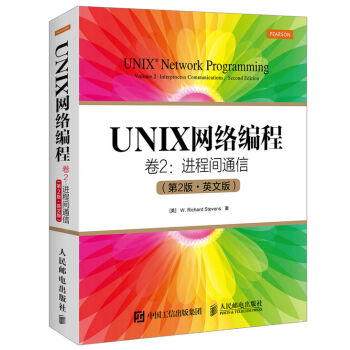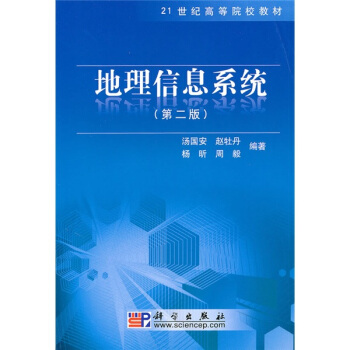![Python數據分析(影印版) [Python Data Analysis]](https://pic.tinynews.org/11830505/567133ffN19161f4c.jpg)

具體描述
內容簡介
Python是一種多範式的編程語言,既適閤麵嚮對象的應用開發,也適閤函數式設計模式。Python已然成為數據科學傢們在數據分析、可視化和機器學習方麵的**語言,它可以帶來高效率和高生産力。《Python數據分析(影印版 英文版)》將教會初學者如何發掘Python的*大潛力用於數據分析,包括從數據獲取、清洗、操作、可視化以及存儲到復分析和建模等一切相關主題。它聚焦於一係列開源Python模塊,比如NumPy、SciPy、matplotlib、pandas、I Python、Cython、scikit-learn以及NLTK等。在後麵的章節裏,《Python數據分析(影印版 英文版)》涵蓋瞭數據可視化、信號處理與時間序列分析、數據庫、可預測分析及機器學習等主題。
目錄
PrefaceChapter 1: Getting Started with Python Libraries
Software used in this book
Installing software and setup
On Windows
On Linux
On Mac OS X
Building NumPy SciPy, matplotlib, and IPython from source
Installing with setuptools
NumPy arrays
A simple application
Using IPython as a shell
Reading manual pages
IPython notebooks
Where to find help and references
Summary
Chapter 2: NumPy Arrays
The NumPy array object
The advantages of NumPy arrays
Creating a multidimensional array
Selecting NumPy array elements
NumPy numerical types
Data type objects
Character codes
The dtype constructors
The dtype attributes
One-dimensional slicing and indexing
Manipulating array shapes
Stacking arrays
Splitting NumPy arrays
NumPy array attributes
Converting arrays
Creating array views and copies
Fancy indexing
Indexing with a list of locations
Indexing NumPy arrays with Booleans
Broadcasting NumPy arrays
Summary
Chapter 3: Statistics and Linear Algebra
NumPy and SciPy modules
Basic descriptive statistics with NumPy
Linear algebra with NumPy
Inverting matrices with NumPy,
Solving linear systems with NumPy
Finding eigenvalues and eigenvectors with-NumPy
NumPy random numbers
Gambling with the binomial distribution
Sampling the normal distribution
Performing a normality test with SciPy
Creating a NumPy-masked array
Disregarding negative and extreme values
Summary
Chapter 4: pandas Primer
Installing and exploring pandas
pandas DataFrames
pandas Series
Querying data in pandas
Statistics with pandas DataFrames
Data aggregation with pandas DataFrames
Concatenating and appending DataFrames
Joining DataFrames
Handling missing values
Dealing with dates
Pivot tables
Remote data access
Summary
Chapter 5: Retrieving, Processing, and Storing Data
Writing CSV files withNumPy and pandas
Comparing the NumPy .npy binary format and pickling
pandas DataFrames
Storing data with PyTables
Reading and writing pandas DataFrames to HDF5 stores
Reading and writing to Excel with pandas
Using REST web services and JSON
Reading and writing JSON with pandas
Parsing RSS and Atom feeds
Parsing HTML with Beautiful Soup
Summary
Chapter 6: Data Visualization
matplotlib subpackages
Basic matplotlib plots
Logarithmic plots
Scatter plots
Legends and annotations
Three-dimensional plots
Plotting in pandas
Lag plots
Autocorrelation plots
Plot.ly
Summary
Chapter 7: Signal Processing and Time Series
statsmodels subpackages
Moving averages
Window functions
Defining cointegration
Autocorrelation
Autoregressive models
ARMA models
Generating periodic signals
Fourier analysis
Spectral analysis
Filtering
Summary
Chapter 8: Working with Databases
Lightweight access with sqlite3
Accessing databases from pandas
SQLAIchemy
Installing and setting up SQLAIchemy
Populating a database with SQLAIchemy
Querying the database with SQLAIchemy
Pony ORM
Dataset - databases for lazy people
PyMongo and MongoDB
Storing data in Redis
Apache Cassandra
Summary
Chapter 9: Analyzing Textual Data and Social Media
Installing NLTK
Filtering out stopwords, names, and numbers
The bag-of-words model
Analyzing word frequencies
Naive Bayes classification
Sentiment analysis
Creating word clouds
Social network analysis
Summary
Chapter 10: Predictive Analytics and Machine Learning
A tour of scikit-learn
Preprocessing
Classification with logistic regression
Classification with support vector machines
Regression with ElasticNetCV
Support vector regression
Clustering with affinity propagation
Mean Shift
Genetic algorithms
Neural networks
Decision trees
Summary
Chapter 11: Environments Outside the Python Ecosystem and Cloud Computing
Exchanging information with MATLAB/Octave
Installing rpy2
Interfacing with R
Sending NumPy arrays to Java
Integrating SWIG and NumPy
Integrating Boost and Python
Using Fortran code through f2py
Setting up Google App Engine
Running programs on PythonAnywhere
Working with Wakari
Summary
Chapter 12: Performance Tuning, Profiling, and Concurrency
Profiling the code
Installing Cython
Calling C code
Creating a process pool with multiprocessing
Speeding up embarrassingly parallel for loops with Joblib
Comparing Bottleneck to NumPy functions
Performing MapReduce with Jug
Installing MPI for Python
IPython Parallel
Summary
Appendix A: Key Concepts
Appendix B: Useful Functions
matplotlib
NumPy
pandas
Scikit-learn
SciPy
scipy.fftpack
scipy.signal
scipy.stats
Appendix C: Online Resources
Index
精彩書摘
《Python數據分析(影印版)》:Installing and exploring pandas
The minimal dependency set requirements for pandas is given as follows:
NumPy: This is the fundament alnumerical array package that we installed and covered extensively in the preceding chapters
python—dateuh I:Thisis a date—handlinglibrary
pytz: This handles time zone definitions
This list is the bare minimum; a longer list of optional dependencies can be locatedat http://pandas.pydata.org/pandas—docs/stable/install.html.We caninstall pandas via PyPI with pip or easy_install, using a binary installer, with theaid of our operating system package manager, or from the source by checking outthe code.The binary installers can be downloaded from http://pandas.pydata.org/getpandas.html.
The command to install pandas with pip is as follows:
pip install pandas
You may have to prepend the preceding command with sudo if your user accountdoesn't have sufficient rights.For most, if not all, Linux distributions, the pandaspackage name is python—pandas.Please refer to the manual pages of your packagemanager for the correct command to install.These commands should be the same asthe ones summarized in Chapter 1, Getting Started with Python Libraries.To install fromthe source, we need to execute the following commands from the command line:
$ git clone git://github.com/pydata/pandas.git
$ cd pandas
$ python setup.py install
This procedure requires the correct setup of the compiler and other dependencies;therefore, it is recommended only if you really need the most up—to—date versionof pandas.Once we have installed pandas, we can explore it further by addingpandas—related lines to our documentation—scanning script pkg_check.
……
前言/序言
用戶評價
評分終於入手瞭這本《Python數據分析(影印版) [Python Data Analysis]》!一直以來,我對數據分析領域都充滿瞭好奇,尤其是在Python這門強大的編程語言的加持下,更是讓我躍躍欲試。拿到書的那一刻,就迫不及待地翻開。這本書的封麵設計簡約而不失專業感,影印版的質量也相當不錯,紙張厚實,印刷清晰,閱讀體驗感很好。我特彆關注的是書中對NumPy和Pandas這兩個核心庫的介紹。我知道,它們是Python進行數據處理和分析的基石,掌握好它們,就等於為數據分析打下瞭堅實的基礎。書中從最基礎的數組操作、數據結構(Series和DataFrame)的創建與操作,到各種數據加載、清洗、轉換的技巧,都講解得十分細緻。尤其是處理缺失值、重復值,以及進行數據分組、聚閤等操作,書中都提供瞭非常實用的代碼示例和詳細的解釋。我嘗試著跟著書中的例子進行實踐,感覺對這些概念的理解一下就深入瞭很多。對於我這種初學者來說,這種循序漸進、理論與實踐相結閤的講解方式,簡直是太友好瞭。而且,書中還提到瞭數據可視化的重要性,雖然這部分我還沒有深入學習,但預感這將會是後續學習的精彩篇章。總而言之,這本書為我打開瞭Python數據分析的大門,我期待著在後續的學習中,能掌握更多高級的分析技巧,真正做到用數據說話。
評分拿到《Python數據分析(影印版) [Python Data Analysis]》這本書,我首先是被它內容的高度實用性所吸引。作為一名對數據分析充滿熱情但缺乏係統指導的學生,我經常在網上搜尋各種零散的資料,效率低下且容易走彎路。這本書就像一位經驗豐富的導師,循序漸進地引領我深入Python數據分析的世界。我特彆喜歡書中關於數據分組和聚閤的章節。在處理現實世界的數據時,我們往往需要根據不同的維度對數據進行分類,然後計算各種統計量,比如平均值、總和、計數等等。書中對Pandas的`groupby()`函數進行瞭詳盡的闡述,不僅解釋瞭其工作原理,還通過大量的實際案例演示瞭如何靈活運用它來解決各種復雜的數據分析問題。例如,如何計算不同産品類彆的銷售額、如何分析不同地區的客戶平均消費水平等等。這些案例都非常貼近實際工作場景,讓我能夠很快地將學到的知識應用到自己的學習或項目中。而且,書中在講解數據閤並和連接時,也提供瞭非常清晰的圖示和代碼示例,讓我對`merge()`、`join()`、`concat()`等函數的使用不再感到睏惑。這本書讓我深刻體會到,掌握瞭強大的工具,再配閤清晰的思路,數據分析將變得更加高效和有趣。
評分這本書,怎麼說呢,它給我一種“久旱逢甘霖”的感覺。作為一名在工作中經常需要處理海量數據的從業者,我一直在尋找一本能夠係統性地梳理Python數據分析脈絡的教材。過去,我嘗試過零散地學習一些教程,但總覺得不成體係,遇到問題時也難以找到根本性的解決方案。而《Python數據分析(影印版) [Python Data Analysis]》恰恰填補瞭我的這一需求。書中邏輯清晰,從Python基礎到數據分析的各個環節,都有條不紊地展開。我尤其欣賞它在講解數據預處理部分時,那種“庖丁解牛”般的細緻。數據的噪聲、異常值、不一緻性,這些在實際工作中是常遇到的難題,而書中提供瞭多種行之有效的處理方法,並配以清晰的代碼實現。比如,關於如何識彆和處理異常值,書中不僅給齣瞭統計學上的判斷方法,還結閤Pandas提供瞭具體的可視化和數值上的檢測手段,這讓我對“異常值”有瞭更深刻的理解,也學到瞭如何用更專業的方式去應對。此外,書中關於數據轉換和特徵工程的章節,也極大地啓發瞭我。如何將原始數據轉化為更有意義的特徵,以便更好地用於後續的建模和分析,這部分的內容給瞭我很多新的思路。總的來說,這本書不僅是一本技術手冊,更像是一位經驗豐富的數據分析師的“工作日誌”,讓我受益匪淺。
評分對於《Python數據分析(影印版) [Python Data Analysis]》這本書,我可以說它是為我量身定做的“數據分析啓濛指南”。一直以來,我對數據分析都有一種“隻聞其聲,不見其形”的感覺,直到讀瞭這本書,我纔算真正踏入瞭數據分析的殿堂。書中對Python在數據分析中的應用,從基礎到進階,都有著非常全麵且深入的講解。我尤其欣賞它對於時間序列數據的處理方法。在金融、氣象、用戶行為分析等領域,時間序列數據都扮演著至關重要的角色。書中詳細介紹瞭如何使用Pandas來加載、清洗、重采樣和分析時間序列數據,包括如何處理日期和時間索引、如何計算移動平均、如何進行季節性分解等等。這些內容對於我理解和處理時間維度上的數據非常有幫助。而且,書中還提到瞭如何利用Python進行文本數據的分析,雖然這部分我還沒有深入學習,但瞭解其可能性,已經讓我對接下來的學習充滿瞭期待。這本書的優點在於,它不是簡單地羅列技術點,而是將這些技術點融入到解決實際問題的過程中,讓學習者在實踐中掌握知識。
評分讀完《Python數據分析(影印版) [Python Data Analysis]》的幾個章節,我最大的感受是它的“接地氣”。很多數據分析的書籍,要麼過於理論化,要麼就是堆砌大量的代碼,讀起來枯燥乏味。但這本書,它總能以一種很自然的方式,將復雜的技術概念轉化為易於理解的語言,並且非常注重實際操作。我尤其對書中關於數據可視化的部分印象深刻。在數據分析的過程中,可視化是必不可少的一環,它能夠幫助我們直觀地發現數據中的模式、趨勢和異常。書中不僅介紹瞭Matplotlib和Seaborn這兩個強大的可視化庫,更重要的是,它講解瞭如何根據不同的分析目的選擇閤適的可視化圖錶,比如摺綫圖、散點圖、柱狀圖、箱綫圖等等,以及如何通過調整圖錶的參數來突齣重點信息。我嘗試著根據書中介紹的方法,用Seaborn繪製瞭一些散點圖和直方圖,來探索數據集中的變量關係,效果非常驚艷!數據中隱藏的規律,一下子就變得清晰可見。這種“所見即所得”的學習過程,讓我對數據分析産生瞭濃厚的興趣,也讓我看到瞭數據背後蘊含的巨大價值。
中文版的被同學拿走瞭,自己又買瞭一本英文版,可能讀起來會比較慢,這書還行。
評分不實用
評分好書,準備這幾天就看
評分好書
評分不錯,正在學python!
評分好好
評分準備學習一下Python數據分析的,感覺這本書的內容還是太膚淺瞭,基本點到即止。
評分挺好。腳後跟骨灰盒紅紅火火。
評分一般
相關圖書
本站所有内容均为互联网搜索引擎提供的公开搜索信息,本站不存储任何数据与内容,任何内容与数据均与本站无关,如有需要请联系相关搜索引擎包括但不限于百度,google,bing,sogou 等
© 2025 book.tinynews.org All Rights Reserved. 静思书屋 版权所有




















